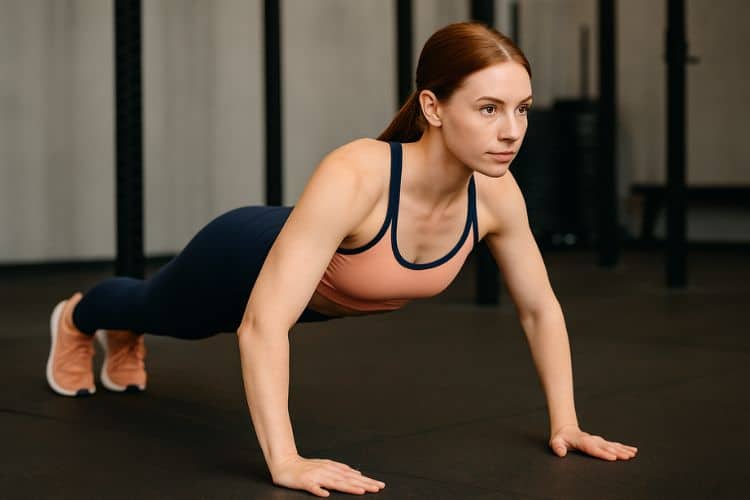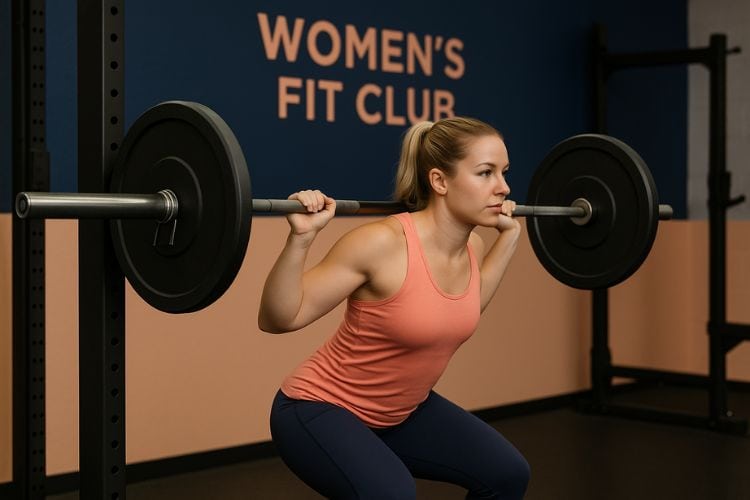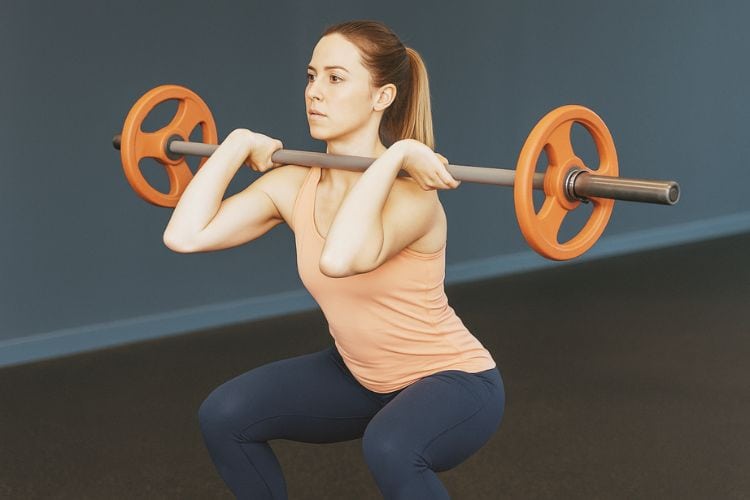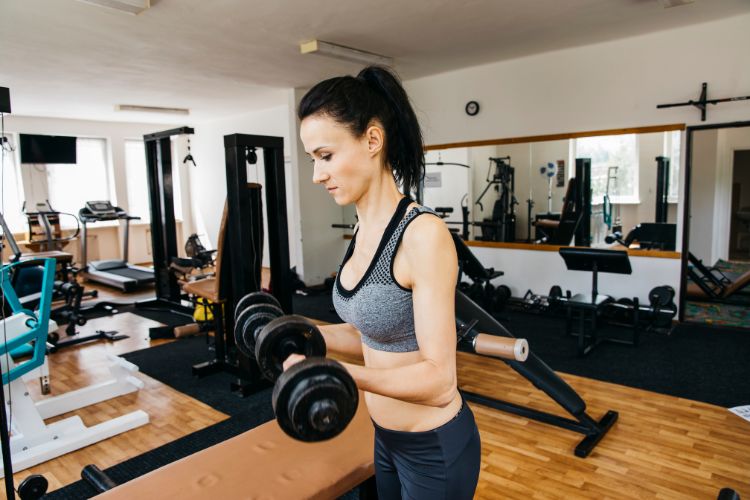Sign up for workout ideas, training advice, reviews of the latest gear and more.






Progressive overload is the cornerstone of effective strength training. Whether you’re working out at home or in the gym, using dumbbells offers a versatile way to challenge your muscles and see consistent gains. In this guide, we’ll break down everything you need to know about progressive overload with dumbbells, including the best strategies, exercises, and tips to maximize results.
Progressive overload is a training principle that involves gradually increasing the demand placed on your muscles over time. This consistent challenge forces your body to adapt by building more muscle mass, improving strength, and boosting endurance.
Your body is highly adaptable. When you lift weights that are heavy enough to fatigue your muscles, your body responds by getting stronger and building more muscle tissue. But if you continue using the same weight, reps, and sets over time, your body stops adapting. Progressive overload prevents plateaus by constantly introducing new challenges.
Dumbbells are one of the most effective tools for implementing progressive overload. Here’s why:
There are multiple ways to apply progressive overload to dumbbell workouts. Here are the key strategies:
The most straightforward method. As you gain strength, move up to heavier dumbbells. For example, if you’re comfortably pressing 25 lb dumbbells for 10 reps, try moving up to 30 lb.
If heavier weights aren’t available, increasing your reps or adding an extra set keeps the stimulus high. For example, progress from 3 sets of 10 to 4 sets of 12 over time.
Controlling the tempo—especially the eccentric (lowering) phase—adds time under tension and makes lighter weights feel heavier.
Shorter rest periods increase muscular stress and cardiovascular demand, which can aid hypertrophy and conditioning.
Refining your form and achieving a full range of motion ensures maximal muscle activation and efficiency in each rep.
Let’s dive into the most effective dumbbell exercises for each muscle group that work well with progressive overload.
A foundational movement that targets the chest, triceps, and shoulders. Lie on a flat bench, press the dumbbells up, and slowly lower them to chest level.
Progression Tip: Gradually increase weight or add a pause at the bottom for more tension.
Focuses on the chest with a deep stretch. Use lighter weights and a controlled movement.
Progression Tip: Increase reps and slow the tempo for added intensity.
Builds back thickness and unilateral strength. Support one knee and hand on a bench and row a dumbbell with the opposite arm.
Progression Tip: Add more reps or use heavier weights while maintaining form.
A compound move that hits the posterior chain—hamstrings, glutes, and lower back.
Progression Tip: Increase weight and work on deeper range of motion.
Targets the shoulders and triceps. Press dumbbells overhead from shoulder height while standing or seated.
Progression Tip: Use a slow eccentric phase (3-5 seconds lowering) to increase difficulty.
Great for developing the medial delts. Lift dumbbells out to the sides, keeping your arms slightly bent.
Progression Tip: Add reps or incorporate drop sets.
Classic arm builder. Curl dumbbells while keeping elbows close to your sides.
Progression Tip: Increase reps or use alternating curls with a twist for added challenge.
Targets the triceps. Bend at the hips, keep elbows up, and extend the arms behind.
Progression Tip: Focus on strict form and higher reps to progressively overload.
Hold a dumbbell close to your chest and squat. This movement works the quads, glutes, and core.
Progression Tip: Increase the dumbbell weight or add a pause at the bottom.
Targets hamstrings and glutes. Hold dumbbells in front of your thighs, hinge at the hips, and lower the weights down the legs.
Progression Tip: Add reps or use a slower tempo.
Excellent for unilateral leg strength. Step forward or backward into a lunge.
Progression Tip: Use heavier dumbbells or add more reps per leg.
Here’s a 4-week plan to get you started with progressive overload using dumbbells:
Full Body (Day 1 Example):
Progression Focus: Increase time under tension and volume.
Progression Focus: Heavier weights for strength adaptation.
Progression Focus: Time under tension and fatigue management.
Tracking is key to success. Here’s how to keep things organized:
Record your sets, reps, weight used, and rest time. Apps like Strong or Fitbod can automate progress tracking.
Aim to increase one training variable each week—either weight, reps, sets, or reduce rest.
Reassess your max reps or weight for each key movement to gauge progress.
Even with a solid plan, mistakes can slow or stall your progress. Avoid these pitfalls:
If your workouts feel too easy, you’re not progressing. Push yourself to hit fatigue by the final reps.
Don’t sacrifice form just to lift heavier. Use weight you can control with proper technique.
Muscles grow during recovery. Ensure you get 7–9 hours of sleep and take rest days seriously.
The best progressive overload plan won’t work without consistency. Stick to your program and be patient.
Progressive overload demands proper fuel and recovery. Here’s what to prioritize:
Aim for 0.7–1 gram of protein per pound of bodyweight to support muscle repair and growth.
Muscles need water to function and recover. Drink at least 8 cups of water daily, more with exercise.
Sleep is when your body repairs muscle tissue. Poor sleep = poor gains.
Light activity like walking, yoga, or mobility work helps reduce soreness and improves circulation.
Dumbbells aren’t just for beginners—they’re a powerful tool for progressive overload and long-term results. By gradually increasing the demands you place on your muscles and tracking your progress, you can build serious strength and muscle using just a pair of dumbbells.
Whether you’re training at home or at the gym, progressive overload with dumbbells offers the perfect blend of simplicity, challenge, and effectiveness. Stick to the plan, stay consistent, and your gains will follow.
Stay up to date on the latest women’s health, fitness and lifestyle trends and tips.